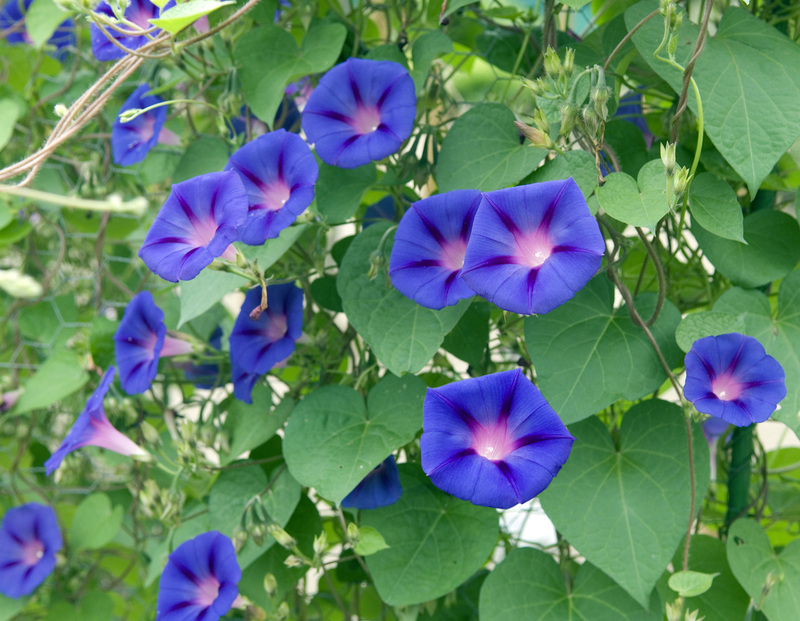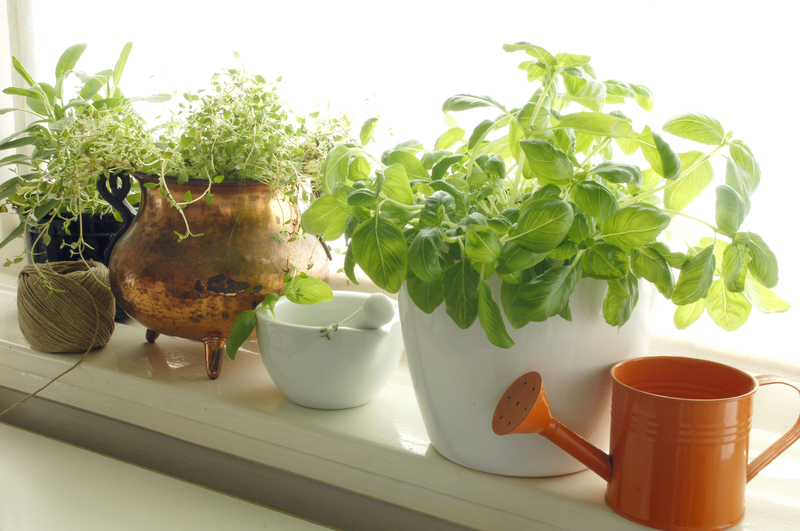How to Design a Budget-Friendly, Easy-to-Care-For Garden
Posted on 29/06/2025
How to Design a Budget-Friendly, Easy-to-Care-For Garden
Dreaming of a beautiful outdoor space but worried about the cost or time required to maintain it? The good news is, you can create a stunning and practical garden without breaking the bank or spending all your weekends weeding and pruning. In this guide, we'll show you the essential steps, tips, and tricks to design a budget-friendly garden that's also easy to maintain. Whether you're designing from scratch or revamping an existing yard, these strategies will help you craft a delightful green oasis that saves money, time, and effort.
Why Create a Low-Maintenance, Cost-Effective Garden?
Before diving into the steps of designing a budget-friendly, easy-to-care-for garden, it's important to understand the benefits. Aside from saving money, an affordable and low-maintenance garden allows you to:
- Enjoy more free time--spend less time on chores, more time relaxing and entertaining.
- Reduce water and resource usage, which is good for your wallet and the environment.
- Decrease the need for expensive fertilizers, chemicals, and equipment.
- Enhance property appeal without ongoing costs or complicated upkeep.

Step 1: Assess Your Outdoor Space & Set Your Budget
Evaluate Your Site Conditions
Start your journey to an easy-to-care-for, cost-effective garden by taking a close look at your available space. Note the following:
- Amount of sun and shade
- Soil quality and drainage
- Existing plants and features
- Local climate and weather patterns
Determine Your Budget
Create a realistic budget that covers the essentials. Focus spending on key priorities, like initial soil improvement and a few quality plants, rather than major landscaping features. Remember, starting small and expanding gradually is the wisest approach for a thrifty garden design.
Step 2: Plan Your Layout with Simplicity in Mind
Sketch a Simple Garden Plan
Draw a basic map of your garden space, considering how you'll use each area. For a low-cost, easy-to-maintain garden, stick to simple shapes and layouts. Curved beds, wide borders, and sweeping lines usually require more maintenance than straight, structured lines.
- Limit the number of planting beds--this minimizes edging, weeding, and mulching.
- Group plants with similar needs together to reduce care complexity.
- Leave open spaces for future expansion or functional areas like seating.
Consider Functionality and Aesthetic
Ask yourself: *What do you want from your space?* Whether it's a space for entertaining, a children's play area, or a quiet retreat, prioritize features that fit your lifestyle and don't require intensive maintenance.
Step 3: Choose Affordable, Low-Maintenance Plants
Pick Hardy Perennials and Native Species
When striving for a budget-conscious, easy-care garden, plant selection is crucial. Instead of expensive or exotic species that demand special attention, focus on:
- Perennials--plants that come back year after year, saving you money and effort.
- Native plants, which are adapted to your local climate, need less water, fertilizer, and care.
- Drought-tolerant plants, especially if your area is prone to dry spells.
- Ground covers--living mulches like creeping thyme or clover suppress weeds and hold moisture.
- Evergreen shrubs for year-round structure with low maintenance.
Great Budget-Friendly Plant Choices
Here's a sample list to get you started, depending on your region:
- Lavender - Beautiful, aromatic, attracts pollinators, and drought tolerant.
- Daylilies - Very resilient, available in many colors, and multiply over time.
- Sedum - Excellent for poor soils and dry conditions.
- Hostas - Perfect for shade gardens and require little upkeep.
- Black-eyed Susans - Cheerful, long-blooming, and withstand neglect.
Propagate and Swap
Stretch your plant budget by propagating from cuttings, divisions, or seeds. Join local plant swaps or gardening groups to share and find free or low-cost plants.
Step 4: Build Soil Health on a Budget
Healthy soil reduces the need for fertilizers and labor-intensive care. Here's how to improve your soil without spending a fortune:
- Compost kitchen and garden waste to create free, nutrient-rich soil amendments.
- Use leaf mulch, grass clippings, or wood chips to retain moisture, suppress weeds, and feed the soil.
- Rototill or hand-dig only as necessary--disturbing the soil less protects beneficial organisms.
Step 5: Prioritize Mulching and Weed Control
Mulching is one of the most effective ways to create a simple, low-maintenance garden on a budget.
- Mulch suppresses weeds, holds moisture, and reduces watering needs.
- Use free or cheap sources: shredded leaves, grass clippings, or local arborist wood chips.
- Apply 2-4 inches around plants, but keep mulch from direct contact with stems and trunks.
Simple Weed Control Strategies
Prevention is cheaper and easier than constant weeding. Try these tactics:
- Edge beds with recycled bricks or stones to create barriers.
- Plant densely to shade out weed seeds.
- Use sheets of cardboard or newspaper under mulch for extra weed blocking (they will biodegrade over time).
Step 6: Save Water & Time with Smart Irrigation
Water-Efficient Gardening Tips
Water-wise gardening isn't just eco-friendly, it saves money and reduces maintenance needs!
- Group plants by water needs so you never over-water or under-water any spot.
- Water early in the day to reduce evaporation.
- Collect rainwater in barrels to use during dry periods.
- Install a drip irrigation kit or soaker hoses -- both are inexpensive, easy to install, and highly efficient.
Step 7: Use Cost-Effective Hardscape & Decorative Elements
Budget-Friendly Pathways and Borders
Instead of expensive stone or concrete, consider:
- Gravel or crushed stone for paths--drainage-friendly and affordable.
- Upcycled bricks, timber, or stepping stones for borders or patios.
- Simple mulch paths (bark, straw) are functional and blend in with your easy-care garden.
DIY & Low-Cost Decor Ideas
- Repurpose old containers as planters--painted buckets, tires, or crates add charm.
- Use reclaimed wood for benches or raised beds.
- Hang solar lights for atmosphere without big electrical bills.
- Create your own plant supports or trellises from bamboo, saplings, or wire frames.
Step 8: Opt for Low-Fuss Lawns or Alternatives
Minimize Lawn Area
Lawns are among the most upkeep-intensive and costly parts of a garden. Shrink your lawn by expanding beds, paths, or adding ground cover plants.
Alternative Ground Covers
Try clover, creeping thyme, sedum, or even moss for green space without mowing, fertilizing, or heavy watering.
Step 9: Maintain Your Garden with Minimal Effort
Once your low-budget, easy-care garden design is in place, keep it flourishing with these ultra-simple maintenance habits:
- Check for weeds and pests regularly to catch issues early.
- Top up mulch as needed--most materials can be added once or twice a year.
- Deadhead and lightly prune just to encourage fresh blooms and tidy growth.
- Water deeply, but infrequently to encourage resilient, deep roots.
Step 10: Get Creative, Be Patient, and Enjoy!
Your garden will only get better, cheaper, and easier over time. Plants mature, soil health improves, and your personal style can shine through. Don't get discouraged if everything doesn't look perfect in the first season--gardening is about growth and enjoyment, not instant results!
Expert Tips for Building a Cost-Effective, Effortless Garden
- Start small and expand as you learn. You'll avoid costly mistakes and gain confidence.
- Shop late-season sales at local nurseries for deep discounts on plants and supplies.
- Join community or online gardening groups to swap seeds, plants, tools, and advice.
- Reuse materials from your own property or neighbors--old pavers, fencing, compost bins, or furniture can find new life in your garden.
- Involve family or friends in projects for free labor and quality time.
Frequently Asked Questions About Budget-Friendly, Easy-to-Care-For Gardens
- How do I start a low-cost, low-maintenance garden from scratch?
- Begin by assessing your site, planning a simple layout, and improving your soil with free compost or mulch. Focus on easy-care, affordable plants and use recycled materials for paths and beds. Water efficiently and add mulch to keep weeding to a minimum.
- What are the best plants for a cheap, easy-to-maintain garden?
- Perennials, natives, drought-tolerant species, and ground covers like sedum, lavender, daylilies, and clover. They look great and require much less work and investment.
- How can I save money on garden materials?
- Use recycled or upcycled products, collect free mulch from your town or local arborists, propagate from friends' gardens, and look for sales or swaps for plants and supplies.
- Is it possible to have a colorful garden without much work?
- Absolutely! Many low-maintenance plants offer vibrant blooms. Mixing perennials with long-lasting annuals, or adding flowering shrubs, ensures color with little effort.

Bonus: Sample Design for a Budget-Friendly, Effortless Garden
- Main border: Mix of native shrubs and tough perennials like coneflowers, black-eyed Susans, and sedum.
- Sunny spot: Lavender and yarrow (minimal watering needed).
- Shady area: Hostas and ferns (once established, very resilient).
- Small lawn patch or clover meadow: little to no mowing, lush green look.
- Paths: Mulch or recycled stepping stones.
- Herb border: Thyme, oregano, and mint -- edible and decorative, very tough.
- DIY compost bin: Hidden in a corner, supplies free fertilizer for the whole garden.
Conclusion: Your Dream Garden Is Within Reach
Creating a budget-friendly, easy-to-care-for garden is not just possible, but highly rewarding. By focusing on sensible plant choices, simple designs, efficient irrigation, and smart use of resources, you'll enjoy a beautiful, sustainable garden that doesn't drain your time or your wallet. Perfect for busy people, beginner gardeners, or anyone wanting a lush retreat without the fuss.
Start today and watch your affordable, low-maintenance paradise blossom--right outside your door!

